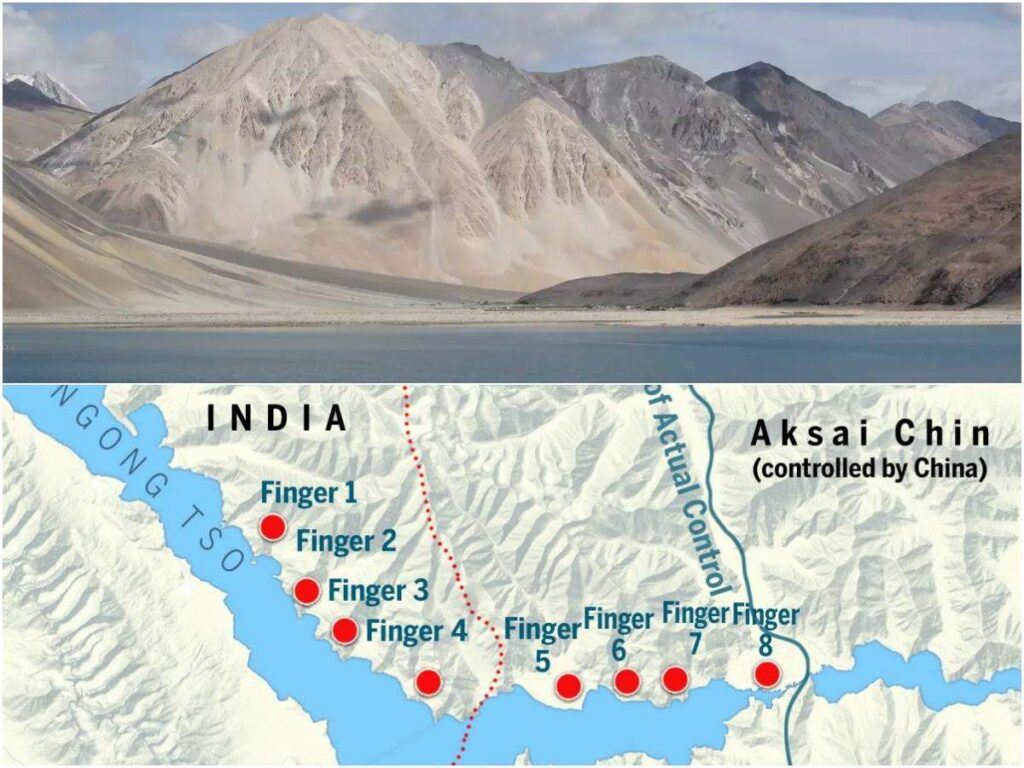After a year-long standoff along the Line of Actual Control, India and China have agreed to a Pangong Tso disengagement plan unanimously. Indian Defence Minister Rajnath Singh presented the disengagement plans in Rajya Sabha today (11 Feb 2021). The plan in its entirety could be considered as a breakthrough and what probably might or might not be a push for better relations between India and China. The disengagement will be around the Pangong Tsao lake along the LAC and Defence Minister Rajnath Singh affirmed that all developments especially the structures built post-April 2020 on the north and south banks of the lake will be dismantled. “According to the agreement on disengagement with China in Pangong lake area, both sides will remove the forward deployment in a phased, coordinated and verified manner,” he proclaimed.
India-China border disputes are not new, given the war of 1962. However, the incidents which took place last year questioned the bilateralism between the two countries. The situations kept worsening over time and a consensus to end the dispute seemed nearly impossible. China’s exertion around the border areas has been increasing, as their political map presented dissimilar geographical areas, compared to the one by India. The disputes have arisen out of demarcated lines—Johnson, Macartney-MacDonald and the McMohan lines. Despite India upholding the demarcated lines, China over time has been pushing itself towards new territories. The Pangong Tsao lake is a 45 KM long lake lying in the western portion of the LAC. The construction of the Darbuk Shayok-Daulat Beg Oldie road which connects Leh to the Karakoram Pass triggered the Chinese PLA stationed along the LAC, for they recorded this as an infiltration inside their territory.
The standoff led to massive speculations and accusations on both sides. The horrendous picture of Indo-China 1962 kept serving as a constant reminder for India to call on for the process of de-escalation and disengagement. The outcome of this border dispute led to a straining relationship between Beijing and New Delhi. The decision was taken on disengagement, albeit late is welcoming and promising. The “synchronised and organized” disengagement comes to light after the consensus between the Corps Commander, post-meeting dated January 24th, 2021. The process of disengagement will be carried out in a phased manner and the first step is pulling back troops around the Pangong Lake. Defence Minister Rajnath Singh stated, “China will pull its troops on the north bank towards the east of Finger 8. Similarly, India will also position its forces at its permanent base at the Dhan Singh Thapa post near Finger 3. Similar action will be taken by both the parties in the south bank area as well.” Further, the Defence Minister was seen confirming that the disengagement process has been agreed upon by both sides, thereby waving off the possibility of any dispute for the moment.
Apart from this, the first step in disengagement comprises pulling back troops from the Kailash range, restoring landforms and other developments in the area post-April 2020 and another round of talks between the commanders in the next 48 hours. The troops will be withdrawn followed by the artillery movement. As per reports, China insisted that India withdraw its troops first, including the ones stationed at Depsang Plains. China’s Senior Colonel Wu Qian highlighted in an official statement that the disengagement is an outcome of the dialogues exchanged in the Corps Commander Level Talk. Proclaiming that India has not compromised anything, Rajnath Singh in his statement called the attention of the Parliamentarians towards the three principles—LAC must be accepted and respected, no change in the status quo and adhering to all agreements; the Chinese will be upholding and abiding by. The decision of disengagement (now) and de-escalation (later) will be a milestone towards a revived Indo-China relationship. There are few outlandish issues along the LAC which will require further dialogue between China and India, but this footstep is a major sigh of relief.

The growing tensions shared between the two countries have resulted in a shift of regional power in South Asia, given the umpteen port projects and other developmental submissions undertaken by China with India’s strongest and friendly ‘neighbours’. The events post this de-escalation will be stimulating to witness given the new US foreign policy outrightly supporting India in the border disputes and China as its robust competitor. Nevertheless, post the disengagement India must not sit back, rather plan out a counter-strategy to regain the bastion of regional power to its hand and look out for further border disputes with its neighbouring countries.
Title image courtesy: https://www.oneindia.com/india/
Article Courtesy: The article was originally published at The Kootneeti by Arijitha Sinha Roy
Disclaimer: The views and opinions expressed by the author do not necessarily reflect the views of the Government of India and Defence Research and Studies





